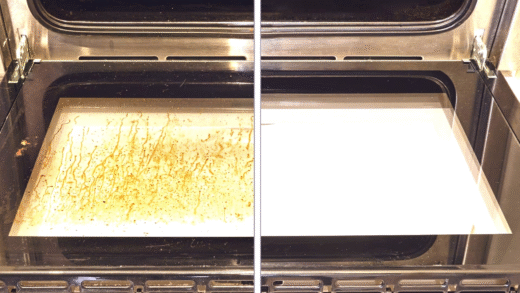This article provides a complete guide on checking brake lights, discussing their importance, how to test them, tools needed, signs of failure, and troubleshooting steps. Regular checks and maintenance are essential for road safety.
What Are Brake Lights?
Brake lights are essential components of any vehicle, serving as a warning signal to drivers behind when the brakes are applied. They are typically red and illuminate when the brake pedal is pressed, alerting other motorists to your intention to stop or slow down. This function is crucial for road safety, reducing the risk of rear-end collisions.
Understanding the importance of brake lights is vital. They not only provide visibility but also convey critical information about your vehicle’s actions. For instance, if your brake lights are malfunctioning, it can lead to dangerous situations on the road. Regular checks are necessary to ensure they are functioning correctly.
How to Check Your Brake Lights Alone
Checking your brake lights without help is straightforward and can be done in a few simple steps. Start by finding a clear space where you can safely park your vehicle. Then, follow these steps:
- Engage the parking brake to prevent the vehicle from moving.
- Press the brake pedal and walk to the rear of the vehicle to observe the lights.
- If you can’t see the lights from behind, use a reflective surface, like a window, to check the light’s reflection.
- Alternatively, position a large object, such as a cardboard box, near the rear to see if the lights illuminate on it.
Using this method allows you to easily verify whether your brake lights are functioning properly without needing a second person. Regular checks can prevent issues before they become serious.
Tools You Need
To effectively test your brake lights, a few simple tools can be very helpful:
- Multimeter: This device can test the voltage in the brake light circuit, ensuring the bulbs receive power.
- Replacement Bulbs: Always have spare bulbs on hand to quickly replace any that burn out.
- Screwdriver: Useful for removing and replacing light covers or bulbs.
- Reflective Surface: A mirror or reflective board can help you check the lights from a distance.
Having these tools will make your brake light maintenance easier and more efficient. Regularly checking your brake lights with the right tools ensures your safety and that of others on the road.
Signs of a Faulty Brake Light
Brake lights can fail for various reasons, and spotting the signs of a faulty brake light early can save you from dangerous situations. Here are some common indicators that something’s wrong:
- Burnt Out Bulb: If your brake light doesn’t illuminate at all when the pedal is pressed, the bulb might be burnt out. This is the most common issue and usually easy to fix.
- Dim Lights: If your brake lights are working but appear dim, it could indicate a failing bulb or an issue with the electrical circuit.
- Intermittent Function: Lights that flicker or only work sometimes often signal a poor connection or a bad switch.
- Unresponsive Lights: If your brake lights don’t turn on at all, it might be a problem with the brake light switch or a blown fuse.
- Warning Lights: Some vehicles have dashboard warning lights that indicate a brake system issue, which might include brake light failures.
Regularly checking your brake lights for these signs can help ensure your vehicle remains safe on the road.
Checking Brake Light Bulbs
Checking brake light bulbs is a crucial step in maintaining your vehicle’s brake system. Here’s a step-by-step guide on how to inspect them effectively:
- Gather Tools: You’ll need a screwdriver to access the light housing and potentially replacement bulbs.
- Access the Bulb Housing: Open the trunk or rear panel of your vehicle to reach the brake light assembly.
- Remove the Bulb: Carefully unscrew or unclip the bulb holder, then gently remove the bulb. Avoid touching the glass part with your fingers to prevent oil contamination.
- Inspect the Bulb: Check for any signs of damage or burning. A burnt filament indicates the bulb needs replacing.
- Replace if Necessary: If the bulb is burnt out, replace it with a new one of the same type. Ensure it fits snugly in its socket.
- Test the Lights: After replacing, have someone press the brake pedal while you check if the new bulb lights up.
Following these steps ensures your brake lights are functioning correctly, enhancing your safety and that of other road users.
How to Check the Brake Light Switch
The brake light switch is a small but vital component that activates your brake lights when you press the pedal. Here’s how to check if it’s functioning properly:
- Locate the Switch: Usually found near the top of the brake pedal, the switch may be hard to spot at first.
- Visual Inspection: Check for any visible damage or misalignment. If the switch is loose, it may not engage properly.
- Test the Switch: Disconnect the switch wiring harness and use a multimeter to check for continuity. Press the pedal while testing; continuity should be present only when the pedal is pressed.
- Reconnect: If the switch tests fine, reconnect the wiring. If it doesn’t, consider replacing the switch.
- Final Check: After any adjustments or replacements, have someone press the brake pedal to confirm the lights activate.
Ensuring your brake light switch is working correctly is essential for safe driving. Regular checks can prevent unexpected brake light failures.
Common Reasons for Brake Light Failure
Brake lights can fail due to several common issues. Understanding these reasons helps in timely maintenance and ensures road safety. Here are the primary causes of brake light failure:
- Burnt Out Bulbs: This is the most frequent reason. A simple bulb replacement usually solves the problem.
- Faulty Brake Light Switch: If the switch that activates the brake lights is damaged or misaligned, it can prevent the lights from working.
- Wiring Issues: Damaged or corroded wires can interrupt the power supply to the brake lights.
- Blown Fuses: A blown fuse in the electrical system can cut power to the brake lights.
- Bad Connections: Loose or corroded connectors can lead to intermittent or complete brake light failure.
Identifying these issues early can prevent dangerous situations on the road.
Troubleshooting Brake Light Problems
If your brake lights are not working, follow these troubleshooting steps to diagnose and fix the issue:
- Check the Bulbs: Start by inspecting the bulbs. Replace any burnt-out bulbs.
- Inspect the Brake Light Switch: Ensure the switch is properly aligned and functioning. Test it with a multimeter.
- Examine the Wiring: Look for any visible damage or corrosion in the wiring. Repair or replace as necessary.
- Test the Fuses: Check the vehicle’s fuse box for blown fuses related to the brake lights.
- Consult a Mechanic: If the issue persists after these steps, it may be time to seek professional help.
These troubleshooting steps can help you quickly identify the cause of brake light failure and restore safety.
How Often to Check Your Brake Lights
Regular maintenance of your brake lights is crucial. It is recommended to check your brake lights at least once a month, especially before long trips. Here’s a simple guideline:
- Monthly Checks: Inspect your brake lights monthly to ensure they are functioning correctly.
- Before Road Trips: Always check your brake lights before embarking on a long journey.
- After Repairs: If you’ve had work done on your vehicle, confirm that the brake lights are working after any service.
By following these best practices, you can ensure that your brake lights are always operational, contributing to safer driving conditions for you and others on the road.





Comments are closed.